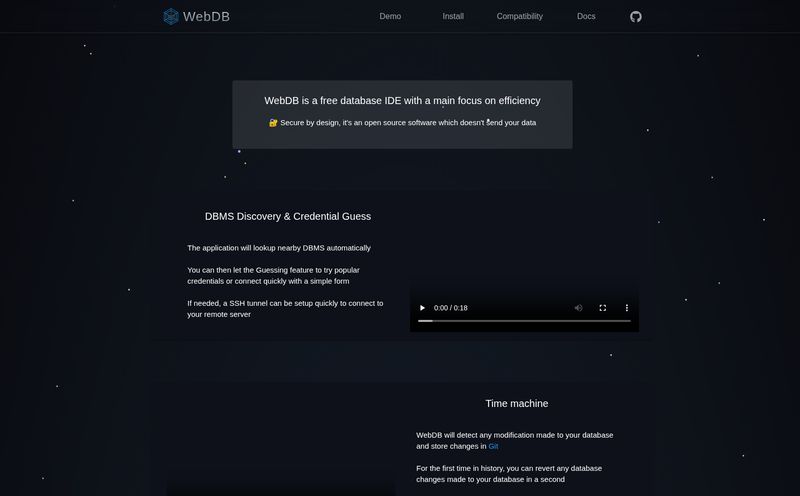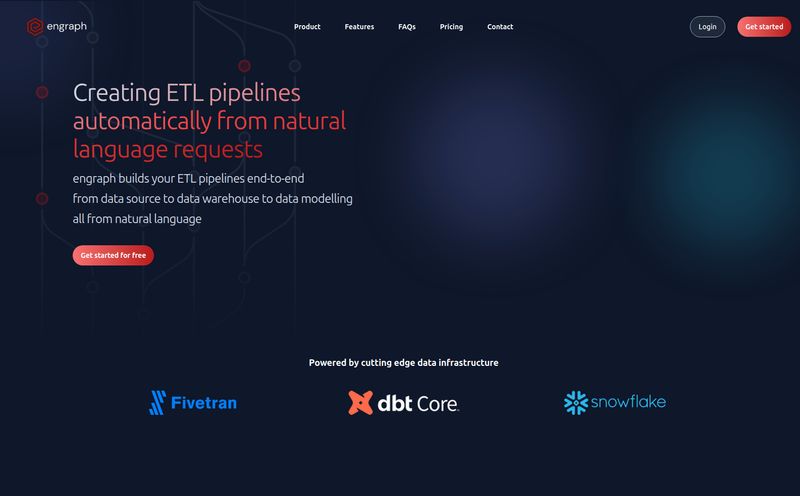I’ve been in the SEO game for a long time. Long enough to remember when stuffing your footer with white text on a white background was a legitimate (and terrible) strategy. So, you can imagine, I've seen my fair share of 'game-changers.' Every week, it seems there's a new tool, a new platform, a new AI that promises to completely upend how we find information online.
Most of them are flashes in the pan. But every so often, something catches my eye. This week, it was a little site called gAIgle.com.
The name alone is clever, right? A portmanteau of Google and AI. It immediately tells you the story: the raw, planet-spanning index of Google, combined with the conversational, context-aware smarts of an AI like GPT-4. On paper, it's the dream. A search engine that doesn't just give you a list of links to sift through but gives you an actual answer. A research assistant, a creative partner, and a search engine all rolled into one. So naturally, I had to take a look.
And what I found was... interesting. And a little bit weird. Let’s get into it.
So, What is gAIgle Supposed to Be?
At its core, gAIgle is trying to be the peanut butter cup of search. It takes two great things—Google's massive search capability and GPT-4's language processing—and smashes them together. The interface, from what I could see, is clean and minimalist. It’s a chat window, pure and simple. No clutter, no ads (yet), just a prompt box waiting for your query.
The idea is you type in a question, and instead of just getting the classic ten blue links, the AI synthesizes information from Google's results to give you a direct, conversational answer. The homepage hints at some slick features: preset prompts to get you started, quick commands for power users, and something intriguingly called “mask plugins.”
It looks and feels like the next logical step. Honestly, it's what many of us thought search should have become years ago.

Visit gAIgle
The Broader Dream of AI-Powered Search
Let's be clear, gAIgle isn't shouting into a void. This whole concept of conversational, AI-driven search is the hottest topic in tech right now. Google itself is frantically trying to bolt its own AI onto its search engine with the Search Generative Experience (SGE). Then you have darlings like Perplexity AI, which has already built a loyal following by focusing entirely on being an 'answer engine.'
The writing is on the wall. The old way of sifting through pages of results, trying to dodge SEO-spam and ad-riddled listicles, is starting to feel ancient. We're all drowning in information, and we're looking for a lifeguard, not a bigger ocean. These new tools promise to be that lifeguard, pulling out the one piece of information you actually need.
It's a fundamental shift in user behavior, and every company in this space is scrambling to figure it out. GAIgle is another shot at that goal, another horse in the race. Or is it?
My First Visit and a Few Blaring Red Flags
So I land on the site, ready to put it through its paces. The UI is nice, as I mentioned. It's calming. But then my SEO-spidey sense started tingling. Something felt… temporary. Unfinished.
And then I saw it. A quick domain lookup confirmed my fears. The domain gAIgle.com is listed for sale. Yep. For sale. That’s like walking into a shiny new restaurant on opening day and seeing a “For Lease” sign in the window. It doesn’t exactly inspire confidence.
To make matters stranger, while trying to poke around, I hit a few dead ends. Literally. A classic “404 No page could be found” error. It adds to the mystery. Is this a passion project that someone built and is now abandoning? Is it a proof-of-concept meant to be sold to a bigger company? It feels less like a fully launched product and more like a ghost in the machine—a spectre of what could be.
Breaking Down the Features We Can Actually See
Despite the existential questions about its future, let's look at what's actually there. The user interface does have some thoughtful touches.
The prompt box itself has some baked-in instructions that I appreciate: / to search prompts, ; to use commands. This is a classic power-user move, reminiscent of tools like Slack or Discord. It suggests the creators were thinking about efficiency for people who might use this all day long.
The little icons at the top hint at more:
- Settings: Standard stuff, probably for account details if it ever gets them.
- Themes: Automatic themes are mentioned. A nice-to-have, allowing for light/dark mode customization.
- Plugins: This is the most interesting one. The idea of “mask plugins” is fascinating. I can only speculate, but could this mean applying a certain personality or expertise to the AI? For instance, applying a “skeptical scientist” mask for research queries, or a “creative poet” mask for brainstorming. If so, that's a genuinely clever idea.
The foundation is solid, even if the house itself is for sale and might be haunted.
The Elephant in the Room: Is gAIgle Even a Real Contender?
So we have to ask the tough question. Should we even pay attention to this? It's a classic case of potential versus reality.
The Potential is Huge
The core concept of a clean, chat-based interface sitting on top of Google and GPT-4 is, frankly, what a lot of people want. It sidesteps the complexity and potential bias of Google's all-in-one SGE and offers a more focused experience. If it worked perfectly and had a solid team behind it, it could absolutely carve out a niche.
The Reality is Bleak
Let's be real. A tool with no clear development team, no pricing information, broken pages and a 'for sale' sign is not a tool you can rely on for your business, or even for your daily searches. It's a curiosity. A tech demo. It's like finding a prototype of a futuristic phone at a flea market. Cool to look at, but you probably shouldn't make it your daily driver.
The lack of a pricing page is the final nail in the coffin for its current viability. Is it free? Ad-supported? A future subscription? Who knows. This ambiguity makes it impossible to judge as a serious product.
Who Is This For Right Now?
Even with all the warnings, I can see a few groups of people who might find gAIgle interesting in its current state.
- Tech Enthusiasts and Early Adopters: If you love playing with the latest and greatest, and don't mind if it disappears tomorrow, then sure, have a look.
- Developers and UI/UX Designers: It's a good case study in minimalist design for AI-chat interfaces. There are some good ideas here to learn from.
- SEO Professionals: For people like me, it's our job to watch these trends. gAIgle is a perfect artifact of the current moment—the frantic, messy, exciting race to build the future of search. We're watching to see not just if it survives, but what ideas from it might get absorbed elsewhere.
Frequently Asked Questions about gAIgle
- Is gAIgle a replacement for Google?
- Not in its current state. It's an experimental tool that uses Google's search results but is highly unstable and its future is uncertain. Think of it as an alternative interface, not a replacement.
- What is the difference between gAIgle and ChatGPT with browsing?
- They are conceptually similar, as both use a language model to interpret and summarize web information. gAIgle seems to be built specifically around the Google search/GPT-4 integration, while ChatGPT's browsing is a feature added to a broader AI assistant. The biggest difference right now is that ChatGPT is a fully supported product, and gAIgle is... well, for sale.
- Is gAIgle free to use?
- Currently, there is no pricing information available on the site, so it appears to be free to use. However, this could change at any moment, especially given the uncertain status of the project.
- Why is the gAIgle.com domain for sale?
- That's the million-dollar question. It could be that the original developer has lost interest, run out of funding, or built it as a proof-of-concept with the intention of selling it from the start. It's a major red flag for any potential long-term user.
- What might the "mask plugins" on gAIgle do?
- This is speculative, but based on the term, they could be custom personas or instruction sets for the AI. For example, a "programmer mask" would make the AI respond with code-heavy examples, while a "historian mask" would adopt a more academic tone. It's a powerful concept for customizing AI output.
My Final Thoughts on gAIgle
So, where does that leave us? gAIgle.com is a fascinating, frustrating, and ultimately cautionary tale. It’s a perfect snapshot of this moment in tech history: brimming with incredible ideas but also full of half-finished projects and uncertain futures.
I can't recommend you use it for anything important. I can’t even be sure the site will be online next week. But I am glad I found it. Whether gAIgle itself becomes the next big thing or simply fades away into a 404 error for good, it represents an idea that is not going away. The fusion of search and conversational AI is the future. gAIgle might just be one of the first ghosts of that future, haunting the internet with a glimpse of what's to come.



